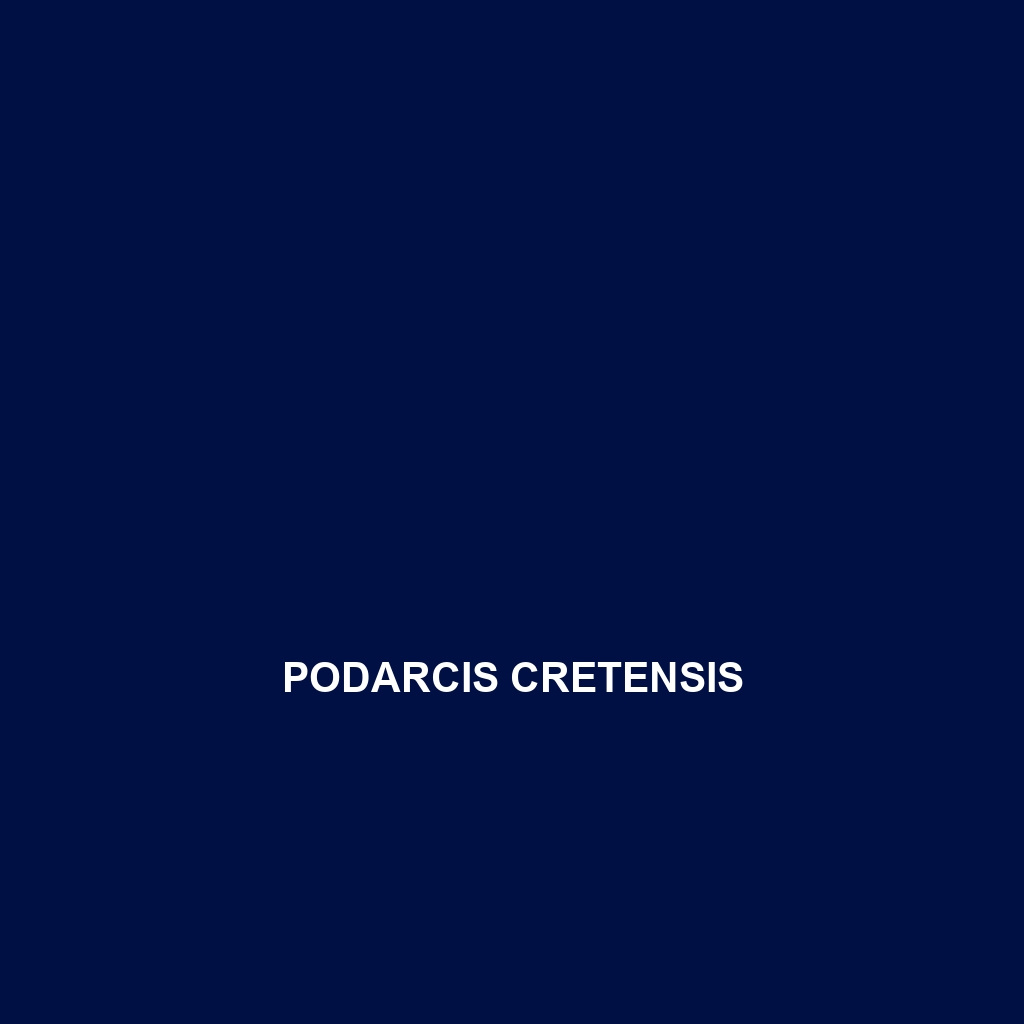Common Name
Podarcis cretensis
Scientific Name
Podarcis cretensis
Habitat
Podarcis cretensis, commonly known as the Cretan Wall Lizard, is predominantly found in the Mediterranean region, specifically on the island of Crete, Greece. This species thrives in a variety of habitats, including rocky outcrops, shrublands, and dry grasslands. The climate of Crete is characterized by hot, dry summers and mild, wet winters, creating a unique environment ideally suited for this lizard. Additionally, Podarcis cretensis is often observed in coastal areas, taking advantage of the island’s marine habitats. These lizards prefer areas with abundant sun exposure, as they are ectothermic and rely on the sun to regulate their body temperature. Their adaptability to different environmental conditions makes them a frequent sight across the varied landscapes of Crete.
Physical Characteristics
Podarcis cretensis exhibits a number of distinct physical traits that set it apart from other lizard species. Typically, adults can reach lengths of up to 25 centimeters (about 9.8 inches). The lizard’s body is slender with a long tail that often exceeds its body length. The coloration of Podarcis cretensis varies significantly, ranging from green to brown or gray, often featuring dark stripes or spots along its back. Notably, males tend to display more vibrant colors during the breeding season, which serves both as a signal to potential mates and rivals. Their toes are equipped with small adhesive pads, enabling them to navigate rocky terrains with ease. These physical characteristics not only aid in camouflage against predators but also enable this species to thrive in its natural habitat.
Behavior
Typical behaviors of Podarcis cretensis include basking in the sun during the day and foraging for food among rocks and vegetation. These lizards are primarily diurnal, meaning they are active during daylight hours. Social interactions can vary; males are known to establish territories that they defend against other males during the breeding season. During courtship, males perform an elaborate display of push-ups and territorial posturing to attract females. While generally solitary, they may occasionally be seen in groups, particularly during basking. Interestingly, Podarcis cretensis has also exhibited unique nesting behaviors where females dig shallow burrows to lay eggs, ensuring the safety of their young from predators.
Diet
Podarcis cretensis is primarily insectivorous, with a diet consisting largely of various insects such as crickets, beetles, and caterpillars. In addition to insects, they may also consume small arthropods and plant matter. This makes them a crucial part of the food web on Crete, as they help control insect populations. As opportunistic feeders, their diet can change based on availability, and they are known to forage actively during the warmer months when food is abundant. The lizard’s agile movement and keen eyesight allow it to hunt effectively, making it an adept forager in its natural habitat.
Reproduction
The reproductive cycle of Podarcis cretensis typically occurs in late spring to early summer. Mating rituals involve males displaying vibrant colors and engaging in physical displays to attract females. After successful mating, females lay clutches of between 3 to 7 eggs in shallow burrows or under rocks, usually in July. The incubation period lasts approximately 6 to 8 weeks, after which hatchlings emerge in late summer. The young lizards are initially independent, utilizing their agility to evade predators. Parental care is minimal, but the protective nesting behavior of females is crucial for the survival of the offspring.
Conservation Status
According to the IUCN Red List, Podarcis cretensis has been classified as being of Least Concern, indicating that the species is relatively stable and not currently facing significant threats. However, habitat destruction due to urban development and introduced predators pose potential risks for their populations. Conservation efforts are essential to monitor their habitats and ensure the protection of this unique species. Awareness campaigns and habitat preservation initiatives are vital for maintaining the ecological balance on the island of Crete, which hosts several endemic species.
Interesting Facts
Podarcis cretensis is noted for its fascinating ability to adapt to various microhabitats across Crete. One interesting behavior is its ability to change color in response to environmental conditions, aiding in camouflage. Additionally, these lizards can tolerate prolonged dry periods, a trait that is advantageous in their often arid habitat. Another exciting fact is that these lizards exhibit a form of social hierarchy, where dominant males claim the best basking spots and have first access to mates, demonstrating their complex social structures.
Role in Ecosystem
Podarcis cretensis plays a vital role in the Cretan ecosystem as both a predator and a prey species. As insectivores, they help regulate insect populations, contributing to the overall health of their environments. Additionally, they serve as a food source for larger predators, including birds of prey and snakes, thus forming an integral part of the food web. Their presence in the ecosystem supports biodiversity and helps maintain the balance of species in the habitats they occupy. Conservation strategies that protect these lizards ultimately support the health of the wider ecosystems of Crete.
